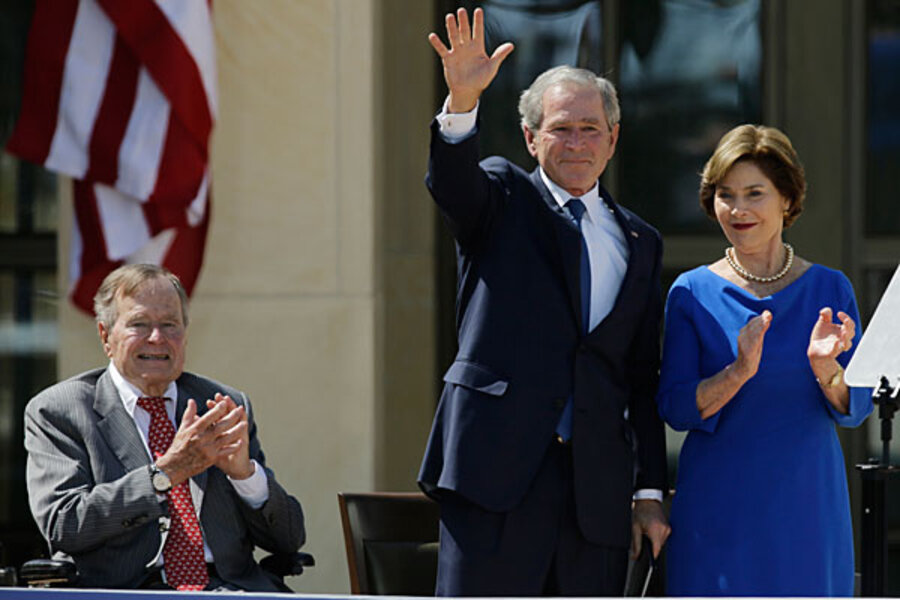George W. Bush back in favor? His ratings make a surprising jump.
Loading...
Former president George W. Bush’s popularity is ticking up. For the first time since 2005, Americans’ opinions of him are more positive than negative.
A Gallup poll released Wednesday found 49 percent of Americans view him favorably and 46 percent unfavorably.
Mr. Bush has chosen to remain largely out of the public eye since leaving the White House. He told CNN last year that “Eight years was awesome, and I was famous and I was powerful but I have no desire for fame and power any more.”
When Bush left office in January 2009, he had a 40 percent favorable and 59 percent unfavorable ranking. His approval rating hit its lowest point in April 2008 at 32 percent. At the time the economy was in recession, gas prices approached record highs, and Hillary Clinton and Barack Obama were jostling for the Democratic Party presidential nomination.
The recovery in Bush's image is not unexpected, given that Americans generally view former presidents positively. Favorable ratings for Ronald Reagan, Jimmy Carter, George H.W. Bush, and Bill Clinton all exceeded 60 percent when Gallup last measured.
Yet “Bush left office with decidedly negative favorability ratings as well as approval ratings, so the recovery in his image is notable,” Gallup writes.
The dedication of the George W. Bush Presidential Library at Southern Methodist University in Dallas in April thrust the 43rd president briefly back in the spotlight and sparked a flurry of commentary about his legacy.
Supporters, such as conservative writer Charles Krauthammer, suggested a parallel to Harry Truman, saying views will improve with time and that Bush "did not just keep us safe. He created the entire anti-terror infrastructure that continues to keep us safe." Others, like Eugene Robinson in The Washington Post penned, "In retrospect, George W. Bush's legacy doesn't look as bad as when he left office. It looks worse."
The latest Gallup poll, conducted June 1-4, found that despite the uptick in his popularity, opinions of Bush remain sharply polarized. He has a 60-point gap in favorable ratings from Republicans versus Democrats.
Bush’s job approval ratings are the most polarized for a president prior to President Obama. Mr. Obama’s approval ratings during his first term continued the severe party polarization trend.
During his fourth year in office, an average of 86 percent of Democrats and 10 percent of Republicans approved of the job Obama did as president. That 76 percentage-point gap ties George W. Bush's fourth year as the most polarized years
“The list of most polarized years makes it clear that Obama's highly polarized ratings may be as much a reflection of the era in which he is governing as on Obama himself. The last nine presidential years – the final five for Bush and Obama's first four – all rank in the top 10. Thus, it appears that highly polarized ratings are becoming the norm, as Americans aligned with both parties are apparently not looking much beyond the president's party affiliation to evaluate the job he is doing,” Gallup wrote in a January 2013 press release.








